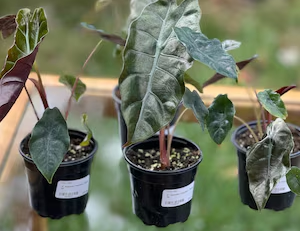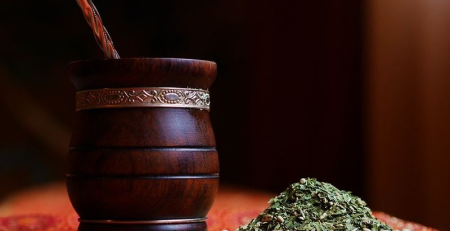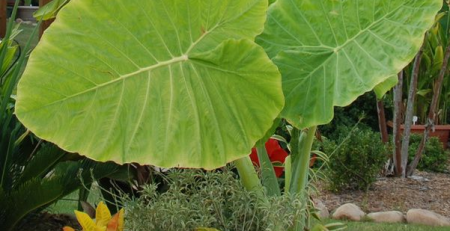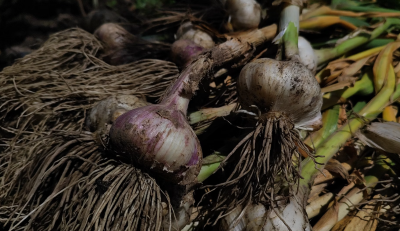When to Dig Sweet Potatoes: A Guide for Gardeners
Introduction
Sweet potatoes (Ipomoea batatas) are a versatile and nutritious crop loved by gardeners and cooks alike. Whether you’re new to gardening or have years of experience, knowing the right time to dig up sweet potatoes is essential for a successful harvest. This guide will explore the factors that influence when to harvest, signs to look for, and tips for digging, curing, and storing your sweet potatoes. By following these steps, you’ll ensure a bountiful harvest and enjoy top-quality tubers.
Understanding the Growth Cycle of Sweet Potatoes
Before you can determine the best time to dig up sweet potatoes, it’s crucial to understand their growth cycle. Sweet potatoes are warm-season crops that thrive in long, hot summers. Depending on the variety and climate, they typically require 90 to 170 days to mature.
Sprouting and Planting
Sweet potatoes start from slips, which are young shoots grown from mature tubers. Plant these slips in the soil after the last frost, ensuring the soil temperature is consistently above 65°F (18°C). Warm soil is critical for encouraging root development and healthy growth.
Vegetative Growth
Once planted, sweet potato vines grow rapidly, covering the ground with lush green foliage. During this phase, the plant focuses on vine growth and establishing roots.
Root Development
As the season progresses, the plant shifts its energy from vine growth to tuber development. Sweet potatoes start forming underground, and their size increases over time.
Maturation
Sweet potatoes typically reach maturity after accumulating enough starch and sugars in the tubers, which usually occurs 90 to 120 days after planting. However, some varieties may take up to 170 days to mature fully.
Factors Influencing the Timing of Harvest
Several factors can influence the timing of your sweet potato harvest, including the variety, climate, soil conditions, and weather patterns. Understanding these factors will help you decide the optimal time to dig up your sweet potatoes.
Variety
Different varieties of sweet potatoes have varying maturity periods. For example, early-maturing varieties like ‘Beauregard’ may be ready in 90 to 100 days, while late-maturing varieties like ‘Centennial’ or ‘Georgia Jet’ may take up to 120 to 170 days. Knowing the specific variety you’re growing is crucial for timing your harvest.
Climate and Growing Conditions
Sweet potatoes thrive in warm climates with temperatures ranging from 70°F to 85°F (21°C to 29°C). Cooler temperatures can slow growth and delay maturity, while excessive heat may stress the plants. The length of your growing season will also impact the timing of your harvest.
Soil Conditions
Well-drained, sandy-loam soil is ideal for growing sweet potatoes. Heavy clay soils can hinder root development and lead to misshapen tubers. Soil temperature is another critical factor; it should stay above 60°F (16°C) during the growing season to ensure optimal tuber development.
Weather Patterns
Weather conditions leading up to harvest can affect sweet potato quality. Ideally, harvest your sweet potatoes before the first frost, as cold temperatures can damage the tubers. Excessive rainfall or drought conditions can also impact the timing of your harvest.
Signs That It’s Time to Dig Sweet Potatoes
Determining when to dig up your sweet potatoes involves observing several signs that indicate the tubers have reached maturity. These signs will help you decide when to harvest to ensure the best flavor, texture, and storage potential.
Vine Condition
One reliable indicator that your sweet potatoes are ready for harvest is the condition of the vines. As the growing season ends, the vines will begin to yellow and die back. This natural process indicates that the plant is diverting energy from the leaves to the tubers. When most of the vines have yellowed and started to wilt, it’s a good sign that the sweet potatoes are ready to be dug up.
Tuber Size
Carefully dig around one or two plants to check the size of the tubers. If they have reached a desirable size—typically 3 to 4 inches in diameter—they are likely ready for harvest. However, keep in mind that sweet potatoes can continue to grow as long as the vines are healthy and the soil is warm. You may choose to wait if you prefer larger tubers.
Days to Maturity
Counting the days from planting is another method to gauge when to dig up your sweet potatoes. Refer to the maturity period of the variety you planted and start checking for readiness as you approach that time frame. For example, if you planted a variety with a 100-day maturity, begin checking for readiness around 90 to 100 days after planting.
Soil Temperature
Monitor soil temperatures as you near the end of the growing season. Sweet potatoes should be harvested before the soil temperature drops below 55°F (13°C). Cold soil can damage the tubers, leading to poor storage quality.
Weather Forecast
Keep an eye on the weather forecast, especially in regions prone to early frosts. Harvest your sweet potatoes before the first frost, as frost can damage the tubers and reduce their storage life. If a frost is imminent, it’s better to harvest the sweet potatoes early rather than risk frost damage.
How to Properly Dig Sweet Potatoes
Once you’ve determined that your sweet potatoes are ready for harvest, it’s essential to dig them carefully to avoid damaging the tubers. Sweet potatoes have delicate skins that are easily bruised or cut, which can lead to rot during storage. Here’s a step-by-step guide to digging sweet potatoes:
Choose the Right Tools
Use a garden fork or spade to dig up your sweet potatoes. Avoid using tools with sharp edges that can cut or bruise the tubers. A garden fork is preferable as it allows you to lift the soil gently and minimize damage to the tubers.
Loosen the Soil
Start by loosening the soil around the base of the plant, about 12 to 18 inches away from the main stem. Insert the fork or spade into the soil and gently lift it to loosen the soil. Be cautious not to insert the tool too close to the plant to avoid damaging the tubers.
Lift the Tubers
Once the soil is loosened, carefully lift the sweet potato plant, using your hands to pull the tubers from the soil. Gently shake off any excess soil, but avoid brushing or washing the tubers at this stage, as their skins are very delicate and can be easily damaged.
Sort and Inspect
After digging up the sweet potatoes, sort them by size and condition. Inspect each tuber for any signs of damage, cuts, or bruises. Set aside any damaged tubers for immediate use, as they won’t store well.
Curing Sweet Potatoes for Optimal Storage
Curing is a critical step in preparing sweet potatoes for storage. It allows the skins to thicken and heal any minor cuts or bruises, which helps to extend the storage life of the tubers. Curing also enhances the sweetness of the potatoes by converting some of the starches into sugars. Here’s how to properly cure sweet potatoes:
Ideal Curing Conditions
Cure sweet potatoes in a warm, humid environment with temperatures between 80°F and 85°F (27°C to 29°C) and relative humidity of 85% to 90%. These conditions encourage the development of a protective layer of suberin, which helps prevent moisture loss and decay during storage.
Curing Duration
Sweet potatoes should be cured for 5 to 10 days. During this time, avoid washing the tubers; simply brush off any excess soil. Place the tubers in a single layer in a well-ventilated area, such as a garage, shed, or covered porch. If you live in a cooler climate, you can use a space heater to maintain the required temperature.
Monitor the Conditions
Regularly check the temperature and humidity levels during the curing process. If the humidity is too low, you can place a damp cloth or towel near the curing area to increase moisture. If the temperature is too high, consider using a fan to promote air circulation and prevent overheating.
Storing Sweet Potatoes for Long-Term Use
After curing, sweet potatoes can be stored for several months if kept in the right conditions. Proper storage is essential to maintain the quality and flavor of the tubers.
Storage Conditions
Store cured sweet potatoes in a cool, dark, and well-ventilated area with temperatures between 55°F and 60°F (13°C to 16°C) and relative humidity of 85% to 90%. A basement, root cellar, or pantry can provide ideal storage conditions. Avoid storing sweet potatoes in the refrigerator, as the cold temperature can cause the tubers to develop a hard core and negatively affect their flavor.
Storage Containers
Use wooden crates, baskets, or cardboard boxes lined with newspaper to store sweet potatoes. These containers allow for proper air circulation while protecting the tubers from light. Avoid using plastic bags or airtight containers, as they can trap moisture and lead to rot.
Regular Inspection
Check your stored sweet potatoes periodically for signs of decay or sprouting. Remove any damaged or rotting tubers immediately to prevent the spread of mold or rot to other potatoes. Sprouting sweet potatoes can still be used, but they should be consumed sooner rather than later, as sprouting reduces the storage life.
Preventing Moisture Loss
To prevent the sweet potatoes from drying out during storage, maintain adequate humidity levels. If the storage area becomes too dry, you can place a damp cloth near the storage containers, but ensure it does not come into direct contact with the tubers.
Storage Duration
When properly stored, sweet potatoes can last for several months—up to 6 months in ideal conditions. However, the storage duration may vary depending on the variety and initial quality of the tubers. Always prioritize using older or damaged sweet potatoes first to minimize waste.
What to Do with Sweet Potatoes After Harvest
Once you’ve harvested and stored your sweet potatoes, there are countless ways to enjoy them in your meals. Sweet potatoes are a versatile ingredient that can be used in both savory and sweet dishes. Here are a few ideas:
Roasting
Roasted sweet potatoes are a simple and delicious side dish. Cut the potatoes into cubes, toss them in olive oil, and season with salt, pepper, and your favorite herbs. Roast them in the oven until tender and caramelized.
Mashing
Sweet potato mash is a comforting and nutritious alternative to traditional mashed potatoes. Simply boil or steam the sweet potatoes until soft, then mash them with butter, cream, and a touch of cinnamon or nutmeg.
Baking
Sweet potatoes can be used in various baked goods, from sweet potato pie to muffins and breads. Their natural sweetness and moist texture make them an excellent ingredient in desserts.
Frying
Make sweet potato fries by slicing the tubers into thin strips, tossing them in oil, and baking or frying until crispy. Serve with a dipping sauce for a tasty snack or side dish.
Soups and Stews
Add sweet potatoes to soups and stews for extra flavor and nutrition. They pair well with a variety of ingredients, including beans, greens, and meats.
Salads
Roasted sweet potatoes make a great addition to salads. Combine them with leafy greens, nuts, cheese, and a tangy vinaigrette for a hearty and healthy meal.
Smoothies
For a unique twist, blend cooked sweet potatoes into smoothies. Their creamy texture and natural sweetness make them a perfect base for a nutritious and filling drink.
Common Problems and How to Avoid Them
While growing and harvesting sweet potatoes can be highly rewarding, there are some common issues that gardeners may encounter. Knowing how to avoid or address these problems can help ensure a successful harvest.
Pest Damage
Sweet potatoes are vulnerable to pests like wireworms, sweet potato weevils, and root-knot nematodes. To prevent pest damage, practice crop rotation, use resistant varieties, and keep the garden clean of debris. Applying beneficial nematodes and using floating row covers can also help protect your crop.
Poor Tuber Formation
If your sweet potatoes are not forming tubers or the tubers are small and misshapen, it could be due to poor soil conditions or overcrowding. Ensure that your soil is loose, well-drained, and rich in organic matter. Space your plants adequately to allow for proper root development.
Cracked Tubers
Cracked sweet potatoes can result from inconsistent watering or rapid growth due to heavy rainfall after a dry period. To avoid this, maintain consistent moisture levels in the soil throughout the growing season. Mulching around the plants can help retain moisture and reduce the risk of cracking.
Rotting Tubers
Tubers may rot if they are exposed to excessive moisture or if they are damaged during harvest. Ensure that the soil is well-drained, and be gentle when digging up the tubers to prevent bruising. Proper curing and storage are also essential to prevent rot.
Frost Damage
Sweet potatoes are sensitive to cold temperatures, and frost can damage both the vines and the tubers. Harvest your sweet potatoes before the first frost, and cover the plants with frost protection if an unexpected cold snap occurs.
Conclusion
Digging sweet potatoes at the right time is crucial for maximizing yield, flavor, and storage potential. By understanding the growth cycle, monitoring the signs of maturity, and considering the factors that influence harvest timing, you can ensure that your sweet potatoes are harvested at their peak. Additionally, proper digging, curing, and storage techniques will help you enjoy your sweet potato harvest for months to come.
Whether you’re roasting, mashing, baking, or frying them, sweet potatoes offer a wealth of culinary possibilities. With the tips provided in this guide, you’ll be well on your way to growing and enjoying a successful sweet potato crop. Happy gardening and harvesting!













Leave a Reply